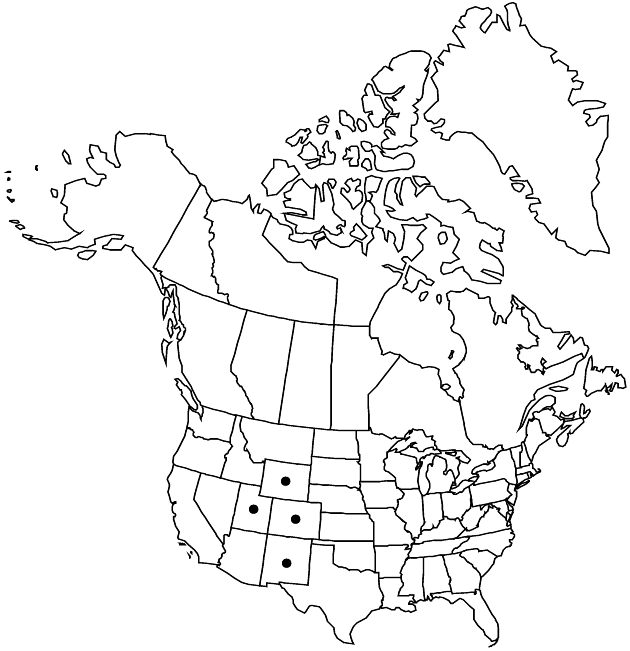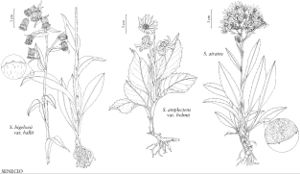Difference between revisions of "Senecio atratus"
Pittonia 3: 105. 1896.
FNA>Volume Importer |
FNA>Volume Importer |
||
| Line 53: | Line 53: | ||
|publication year=1896 | |publication year=1896 | ||
|special status= | |special status= | ||
| − | |source xml=https://jpend@bitbucket.org/aafc-mbb/fna-data-curation.git/src/ | + | |source xml=https://jpend@bitbucket.org/aafc-mbb/fna-data-curation.git/src/f50eec43f223ca0e34566be0b046453a0960e173/coarse_grained_fna_xml/V19-20-21/V20_1223.xml |
|tribe=Asteraceae tribe Senecioneae | |tribe=Asteraceae tribe Senecioneae | ||
|genus=Senecio | |genus=Senecio | ||
Revision as of 20:24, 16 December 2019
Perennials, (20–)35–70(–80+) cm (rhizomes or caudices branched, erect to weakly creeping). Herbage floccose-tomentose to canescent, sometimes unevenly glabrescent. Stems 1–(2–5). Leaves progressively reduced distally; petiolate; blades oblong-ovate to oblanceolate, (5–)10–30 × 1.5–4(–6) cm, bases tapered, margins dentate (denticles, dark, callous; mid leaves similar, sessile, smaller; distal leaves bractlike). Heads 20–60+ in corymbiform or subpaniculiform arrays. Calyculi of 2–5 linear bractlets (lengths to 1/3 phyllaries). Phyllaries (± 5) ± 8, 6–8 mm, tips black. Ray florets (± 3) ± 5; corolla laminae 5–8 mm. Cypselae glabrous. 2n = 40. (A report of 2n = 46 is presumably erroneous.)
Phenology: Flowering late spring–early fall.
Habitat: Dry or drying, rocky or sandy sites in coniferous areas, especially sites with frequent disturbance
Elevation: 2800–4000 m
Distribution

Colo., N.Mex., Utah, Wyo.
Discussion
Selected References
None.
